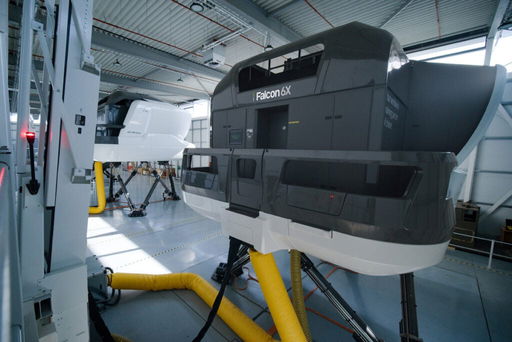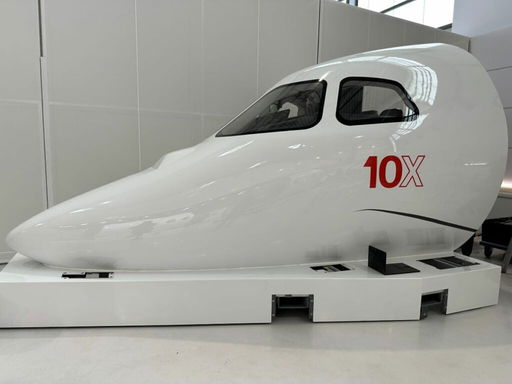With all of its paperwork on file, the latest member of Dassault Aviation’s Falcon family is ready for its official blessing.

Dassault CEO Éric Trappier announced on Monday at the European Business Aviation Conference and Expo that the Falcon 6X program is entering its final phase. “The Falcon 6X has successfully completed its flight test campaign,” said Trappier. “We have submitted all documentation to certification authorities and expect a type certificate to be granted by EASA (European Union Aviation Safety Agency) in the coming weeks, paving the way for entry into service.”
Along with the test program, the first 6X full flight simulator is ready to train its initial pilot type rating class, and Paris-headquartered Dassault’s maintenance, repair and overhaul (MRO) network stands ready to support the model’s entry into service with parts and customer teams in place.
Falcon 10X Progress
Dassault’s largest model, the 10X, continues its development pace. “Testing of systems has begun, employing multiple test benches—in Istres, Merignac and Saint Cloud (in France),” said Trappier, inviting those attending EBACE to visit the full-scale, modular 10X mockup on display at the show.
The powerplant for the new large-cabin model—the Rolls-Royce Pearl 10X—also proceeds in development. “Test results from the aircraft’s Rolls-Royce Pearl 10X engine have also been extremely positive,” said Trappier. “We should have a powerplant installed on a flying test bench later this year. This engine is designed to be 100 percent SAF-capable.”
Trappier also mentioned updates available for the Falcon Xs already flying: “The latest generation of our EASy flight deck, EASy IV, is now available as an upgrade on the Falcon 7X and 8X fleet. And it comes standard with new 8X and 6X aircraft.”
Acknowledging Service Woes
Dassault’s move to upgrade its customer support network stumbled last year as it “struggled” to integrate new ESP software designed to improve spares management. “We committed to having this issue resolved by the first quarter of this year—and I am happy to report that this goal has been achieved,” said Trappier.

But supply chain constraints have continued to hit this sector of its business as well. “Now, however, we find ourselves in the reverse situation: the software is working well, but spares are more difficult to obtain. Admittedly, the impact on our customers is the same, but I can assure you that we are working hard to find a solution for each case—doing whatever it takes.”
New service facilities will open soon in Dubai (this month), Malaysia (2024), and Melbourne, Florida (early 2025)—bringing coverage to 40 factory service centers and 21 authorized facilities.
SAF Update, FalconWays
The implementation of sustainable aviation fuel (SAF) remains one of the best ways for the industry to combat the “business jet bashing” so prevalent in the general media. In the near term, Dassault is focused on this strategy.
“Dassault now offers SAF at our flagship FBO at Le Bourget and at our completion and service center in Little Rock, Arkansas,” said Trappier. “All our flights are performed with a blend of 30 percent SAF, which exceeds by far the requirements of the European Union ReFuel initiative. Our customers are also using SAF, where it’s available.”
The company is also doubling down on its reputation for efficient platforms with a new digital flight management tool, named FalconWays.
“FalconWays uses a worldwide database of wind patterns to identify routes that optimize fuel consumption,” said Trappier. “The farther the mission, the more savings possible. In real-world testing, we have found we could reduce emissions by a significant percentage.”

Trappier closed the press conference with his position on the best path for decarbonization of the industry, in the face of movement within the EU to define which industries are “green” and worthy of supporting.
“Currently, the taxonomy process being discussed by the European Commission is attempting to determine which industries are green and can be considered sustainable investments,” he said. “Additional taxonomy incentives could help serve as a basis for decarbonizing the whole aviation industry. Unfortunately, at this stage, business aviation has been excluded from the process. My personal opinion is that this is patently unfair, politicized, and simply unsupported by the facts.
“Business aviation renders immense services to the global economy and is leading the way in adopting green strategies, like the use of SAF. Excluding business aviation sends the wrong message and may exclude it from decarbonization in Europe, with significant impacts on operators, MROs, and airports alike.
“I can’t overstress the seriousness of the environmental issue and encourage everyone in our industry to show solidarity and work towards making every initiative available part of the overall solution.”


